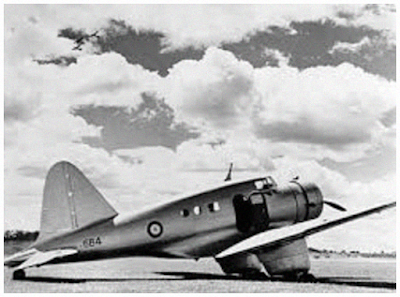During the interwar years, Canada developed its aerospace industry massively, with support from British manufacturers, but also to a lesser extent from the United States. In fact, with the latter, it was mainly licenses that were granted. In this case, a small civilian aircraft was massively transformed into a military aircraft by Canadians, the Northrop Delta, which became Canadian Vickers Delta.
It was in 1935 that the Royal Canadian Air Force began to take an interest in the Northrop Delta 1D, a light aircraft built in the United States. However, Canadians were not looking for an aircraft of this type, but a machine dedicated to coastal reconnaissance and advanced sailor training. In spite of strong discussions, the leaders of Northrop remained marble. It was then that a proposal for a manufacturing license was made to Canadian Vickers. Free to him then to modify the plane according to the wishes of the soldiers, it was henceforth the prime contractor.
A first aircraft was delivered by Northrop to Canadian Vickers, and a license was granted for 24 machines. The first three, strictly identical to the original airplane, were to be designated Delta Mk-I and serve as advanced training for navigators. Only military particularism, except for its livery and its markings, the aircraft had a skydome allowing observation of the sky. Three machines of this type were produced.
From the fourth, machining involved the Delta Mk-II, a clearly military version, armed with a 7.62mm dorsal mobile machine gun and a 250kg bomb load under the wings. For the rest, the airplane resumed the main lines of its model. A Wright SR-1820-F52 Cyclone Star engine with a power of 775 horsepower driving a two-bladed metal propeller. It had a low cantilever wing and a fixed tricycle landing gear whose legs were keeled. They could trade their wheels for skis in winter. Its structure was based on an all-metal construction. The pilot and his co-pilot were seated in a two-seater cockpit side by side while a crew of two to three members sat in the stern.
The very first Canadian Vickers Delta series came into service in 1937. The RCAF was fully staffed in October 1940, even though Canada was engaged in the Second World War. The Delta Mk-II were first assigned to the east side for coastal patrols in search of possible German submarines in the area. In May 1940, however, all the Delta Mk-IIs were transferred to Squadron 120, with Squadron 119 having seen its first twin-engine Bristol Bolingbroke aircraft perform better.
 Among other things, the Squadron 120 aircraft had maritime reconnaissance in the St. Lawrence River area and its estuary. His Delta Mk-II were frequently posted to Newfoundland, again in search of enemy buildings. After the United States entered the war, it was planned to send these planes to the west coast in fear of a Japanese attack on Canada, but this option was never applied, as other aircraft were sent instead of.
Among other things, the Squadron 120 aircraft had maritime reconnaissance in the St. Lawrence River area and its estuary. His Delta Mk-II were frequently posted to Newfoundland, again in search of enemy buildings. After the United States entered the war, it was planned to send these planes to the west coast in fear of a Japanese attack on Canada, but this option was never applied, as other aircraft were sent instead of.In early 1942 the majority of Canadian Vickers Delta Mk-IIs still in flight were assigned to a mechanics school under the designation of Delta Mk-IIA. These were then static instruction cells. They joined two Delta Mk-Is transformed in this way as early as 1940. These planes, grounded, were used until the end of the war, being definitively reformed in July 1945.
Of the twenty-four Canadian Vickers Delta built, only three were lost in operations, resulting in the death of a dozen soldiers. Some aircraft were locally transformed into floatplanes. These planes were never among the Royal Canadian Air Force's flagship aircraft during the Second World War, often overshadowed by other machines, usually twin-engined aircraft such as the Bolingbroke or the Digby. The Canadian Vickers Delta was the first fully built military aircraft in Canada.
Specifications :
Crew: 5
Wingspan: 14.63 m
Length: 10.11 m
Height: 3.20 m
Engine: 1 star engine Wright SR-1820-F52 Cyclone
Total power: 1 x 775 hp.
Weight in load: 3337 kg
Max Speed : 330 km / h to 1150 m
Practical ceiling: 5900 m
Armament: 1 mobile machine gun of 7.62mm
250kg of bombs









0 commentaires :
Post a Comment